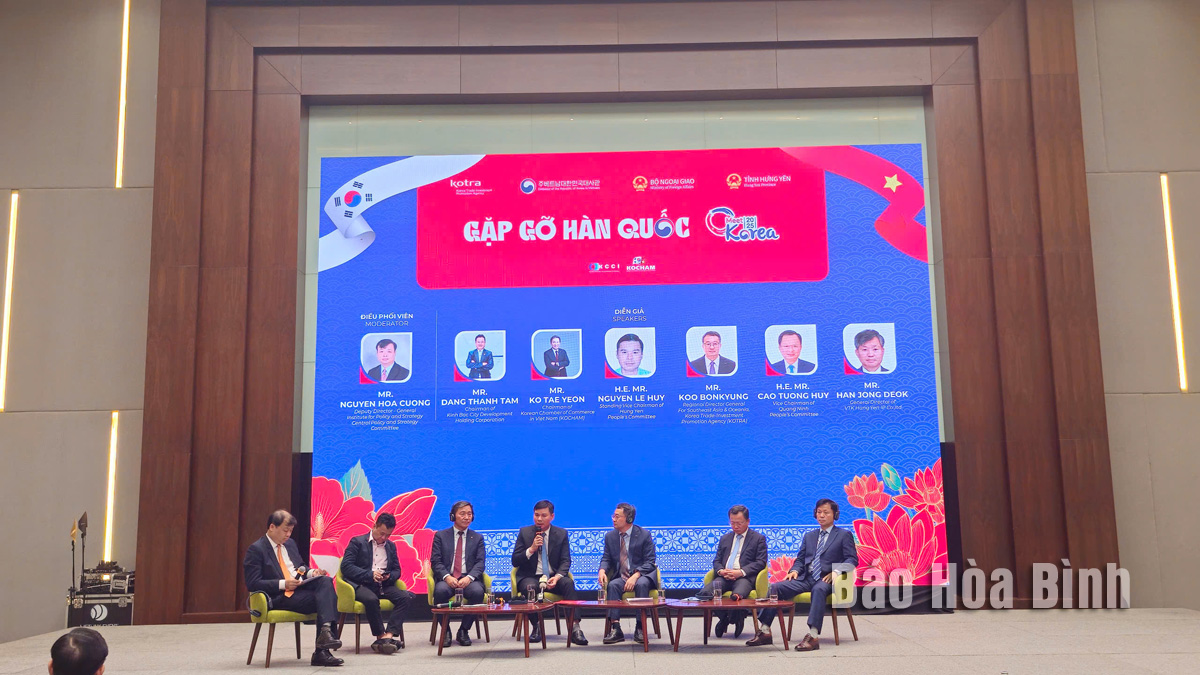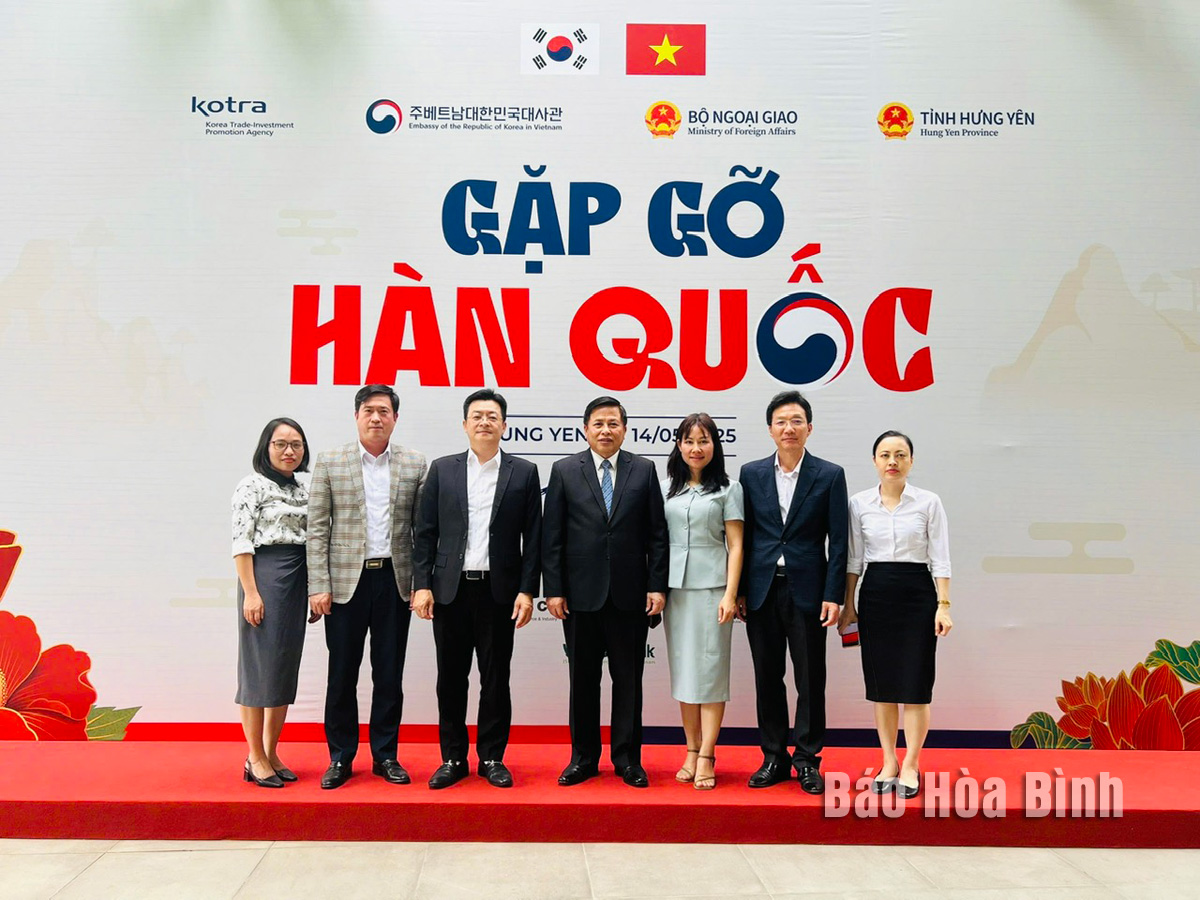



Speakers at the "Meet Korea 2025" event.

The Hoa Binh delegation attends the "Meet Korea 2025" event.
Participants included Deputy Prime Minister and Minister of Foreign Affairs Bui Thanh Son, RoK Ambassador to Vietnam Choi Young-sam, leaders of ministries and sectors, and representatives of 21 provinces and cities nationwide. The delegation of the Hoa Binh People's Committee was led by its Vice Chairman Dinh Cong Su.
Coming to the event, Hoa Binh hoped to attract investment projects in the areas of high-tech supporting industry, high-tech agriculture, processing and preservation of agricultural products, logistics services, tourism, and development of high-quality human resources. It also sought to boost the sale of goods, especially OCOP (One Commune, One Product) items, and its key agricultural products, and attract Korean tourists to the province.
In recent years, the province has carried out many cooperative activities with Korean partners. It has been implementing commitments and agreements signed with Gimje city of Jeolla province, and Ulju county of Ulsan city. The provincial Department of Science and Technology signed a cooperation agreement with the Korea Institute of Science and Technology (KIST).
Hoa Binh is currently home to 17 FDI projects of Korean investors, with a total registered capital of over 1.7 trillion VND (65.4 million USD). It also houses two ODA projects on connecting the province with the national transport infrastructure system and on providing medical equipment for Lac Thuy district’s medical centre.
Hoa Binh has also exported its strong goods and products such as farm produce to the RoK. In 2024, the province shipped 24 tonnes of white sugarcane and over 7.5 tonnes of pickled chili to the Northeast Asian nation. This is a positive signal for local agricultural products, contributing to the local crop restructuring towards cash crop production.